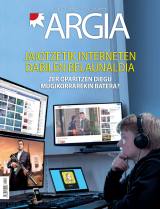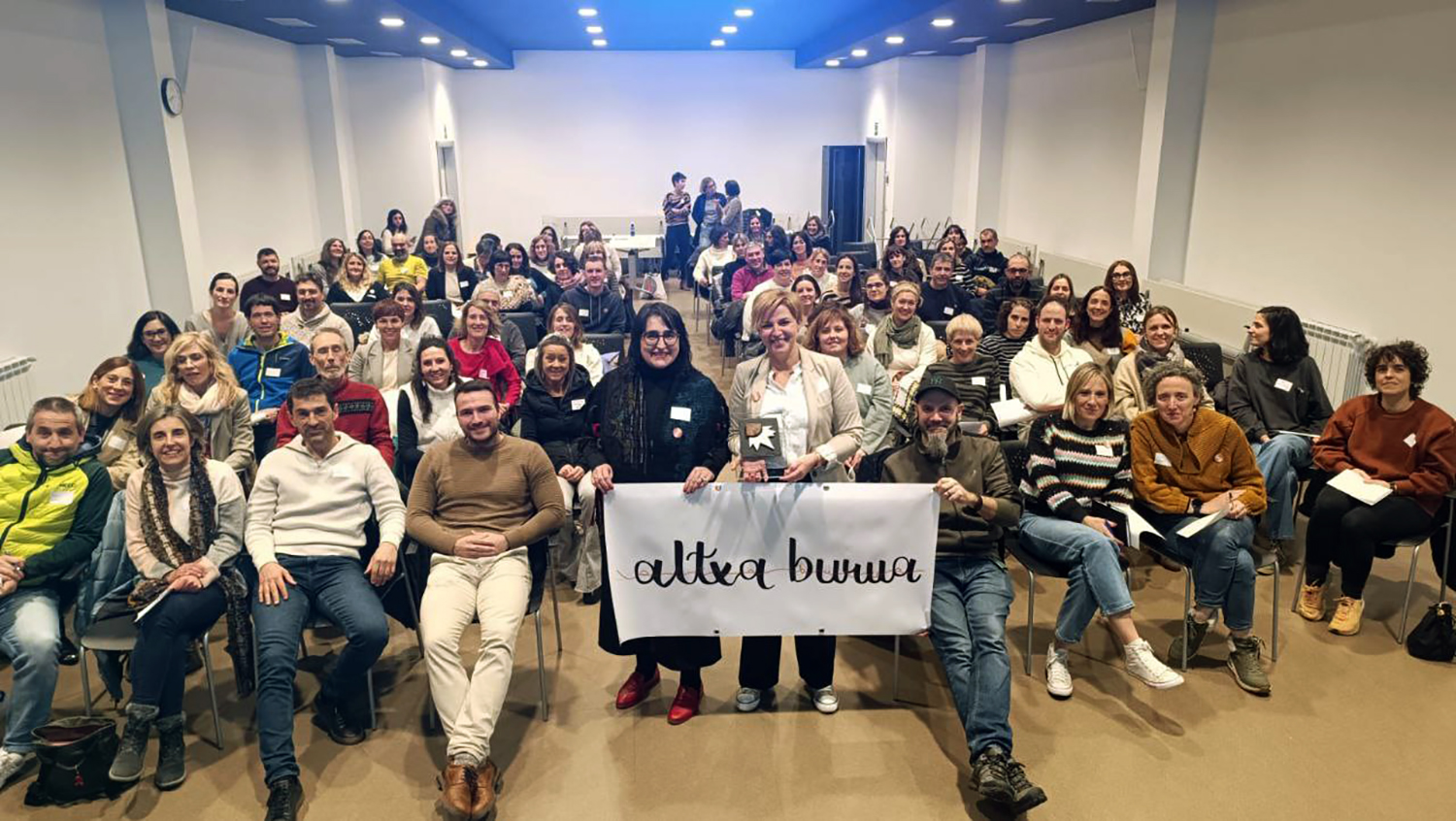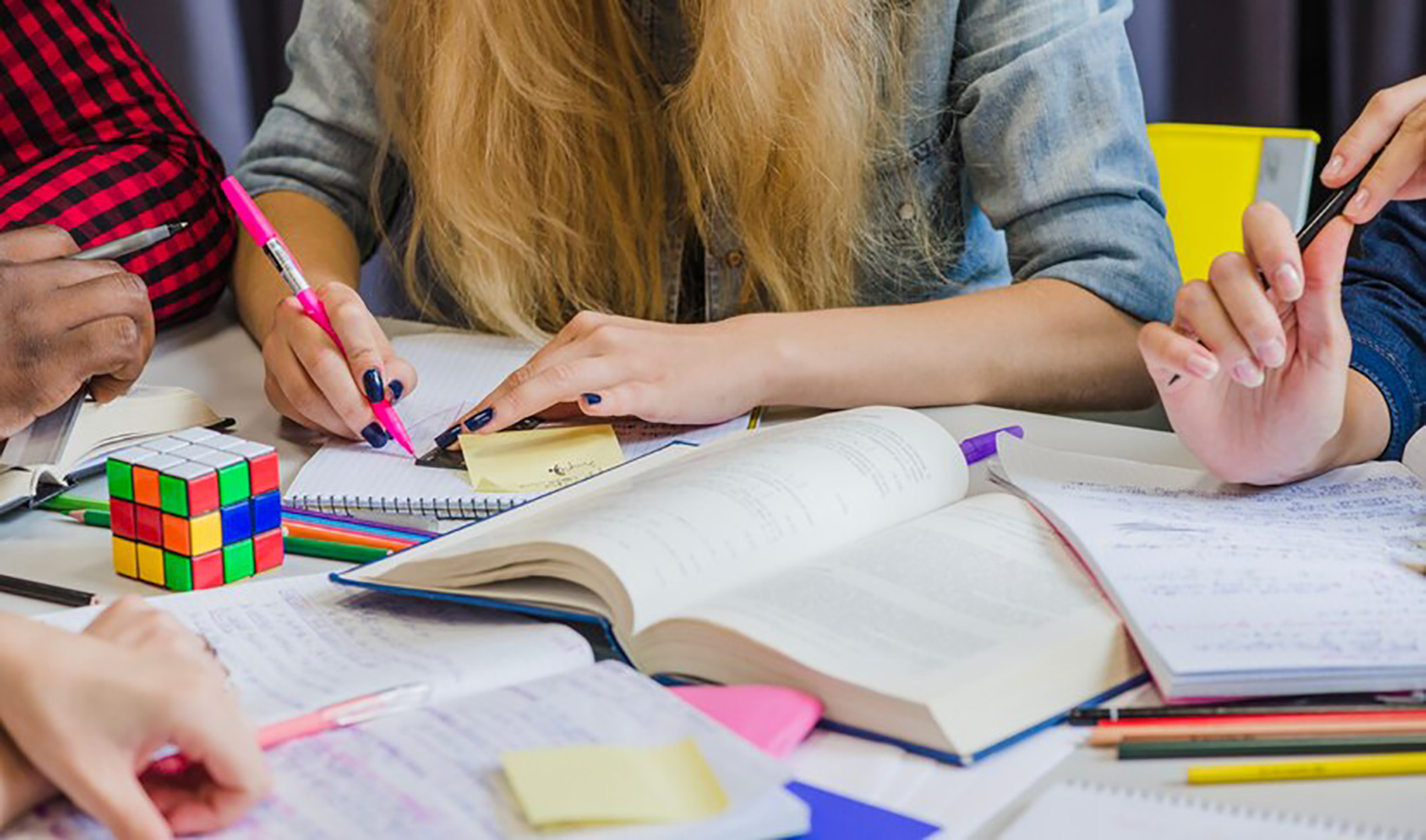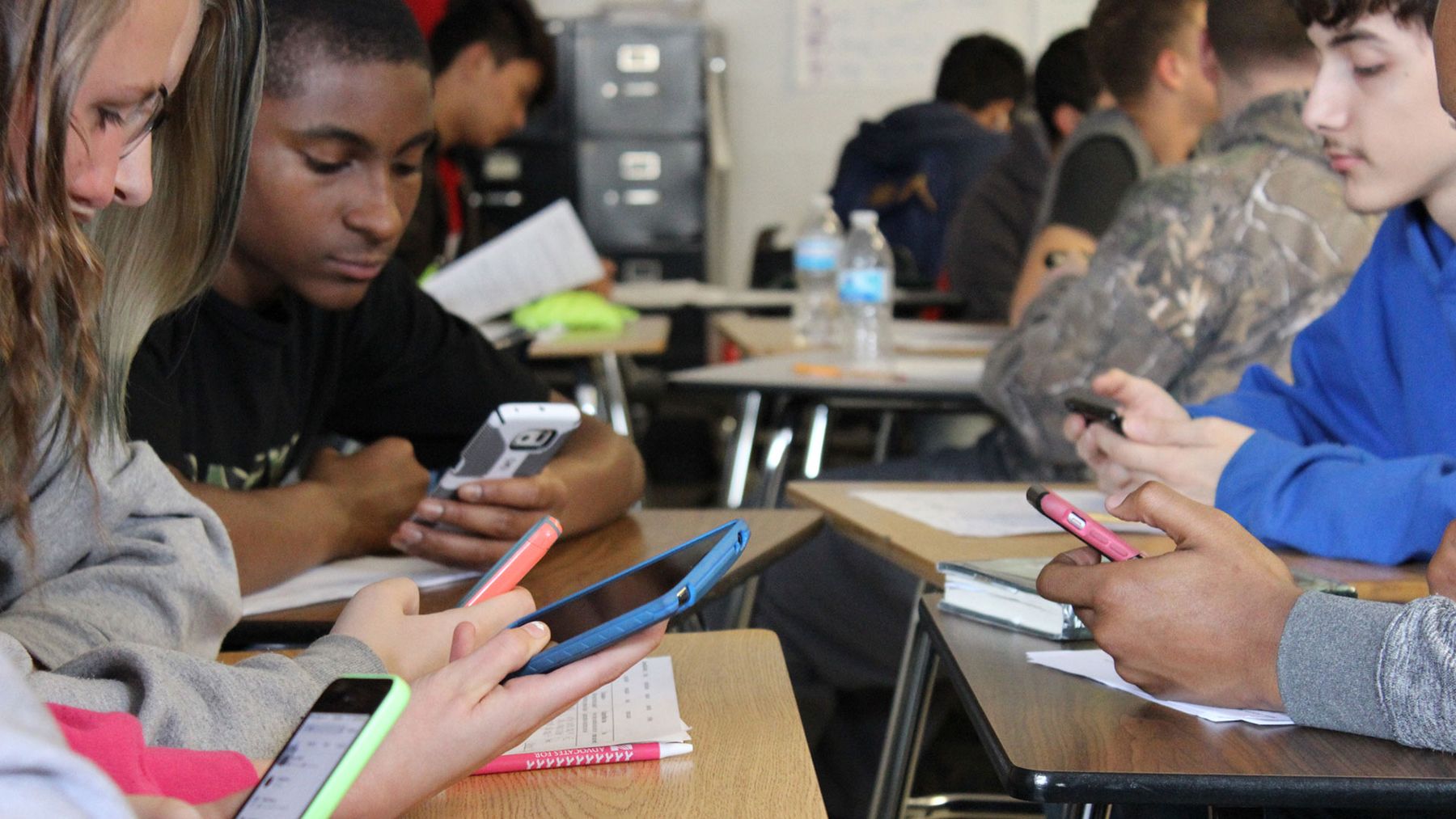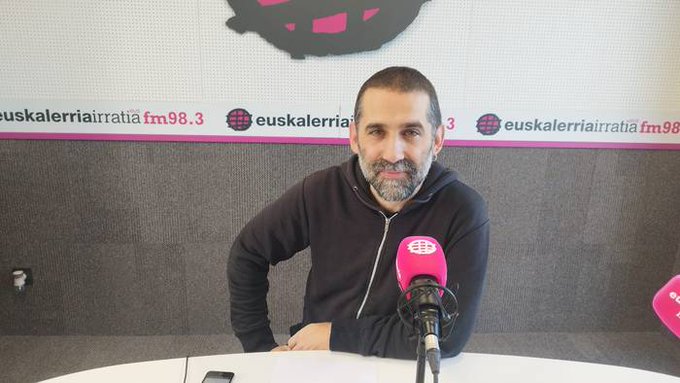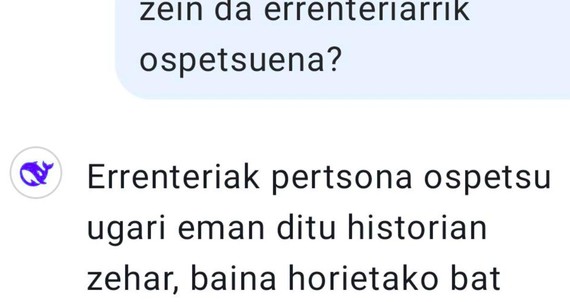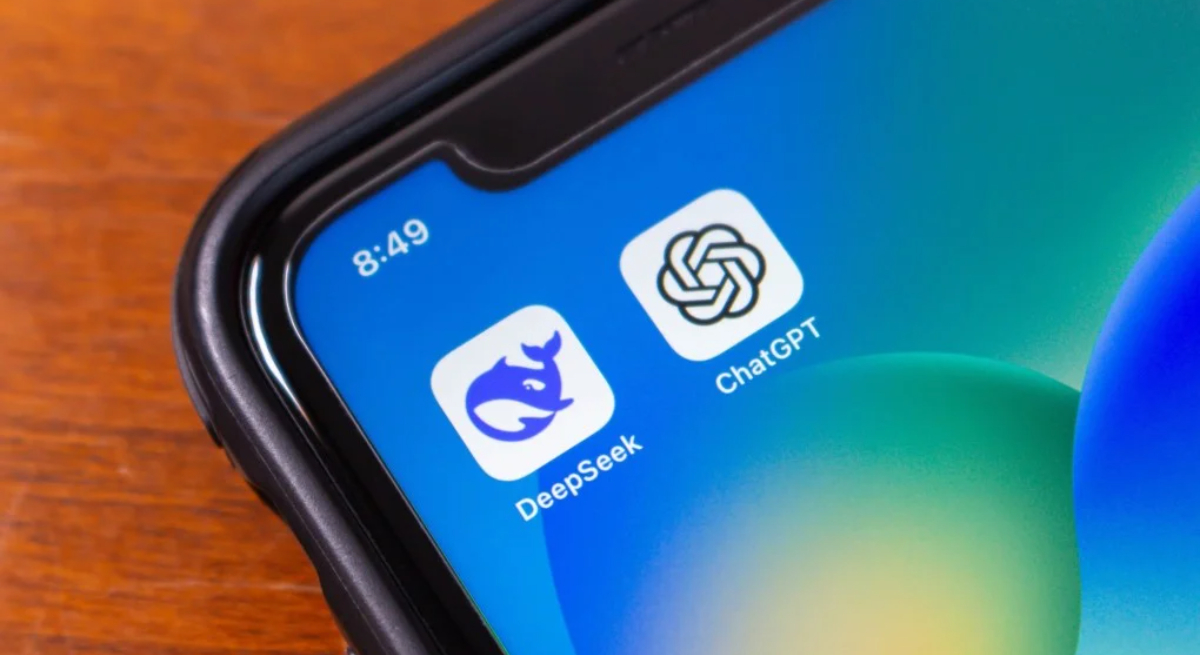Internet life is not virtual
- You may at some point go into a TV store and see a child swirling over the screen as a sign of the relationship of the new generations with technology. As they are closed down, many times we adults limit ourselves to continuously replicating the risks, without being aware that our actions have a direct impact on the process of constructing the digital identity of minors. Assume that on the Internet you are still yourself, the fundamental thing.
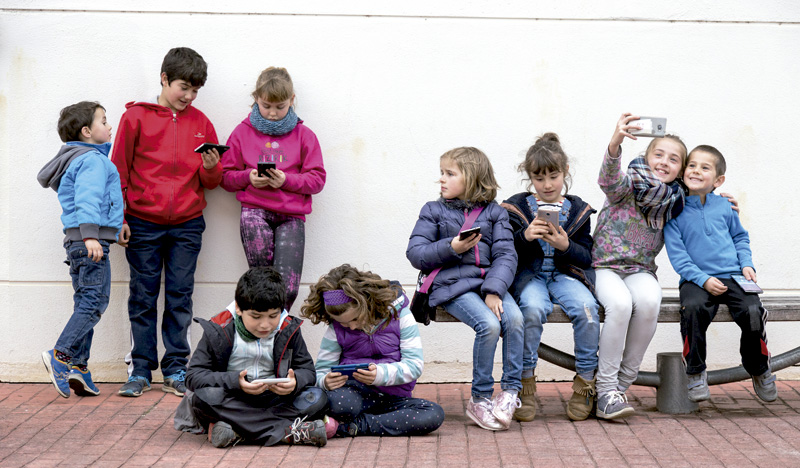
Ten days without a screen at San Francisco Xabier College in Urruña (Lapurdi) will address the challenge from 9 to 18 May, with two main objectives, as explained to us by Primary Professor Eneko Jorajuria: on the one hand, to raise awareness of the banalization of violence and, on the other, to give more time than is necessary for the screen, which negatively influences school performance.
“We see that blows, insults, severe words… are trivialized, not only in adult schools, but also in the First Division, among children under the age of 11,” says Jorajuria. Violence also has a great presence on television, in cartoons and in films directed at youth, which can cause violence not to be measured in its proper size, students not to take distances, because they often do not recognize it as violence. “Just like some YouTube videos; it’s a new form of humor for them.” He says that we are buying mobile phones earlier and that it is difficult to control what they are doing at all times. In the evening they are left by the bed and in the early morning messages are exchanged, they talk about a third party… All this influences the relationship.”
He has also told us that watching the screen at breakfast time or before bedtime requires a lot of attention, that it does not help to rest the brain and that he goes to school with less attention. Project information can be obtained on the web Edupax.org Ten days without screen. Since these are extra-curricular devices that should be used as little as possible, the active participation of the parents and the involvement of the agents of the area will be essential, since the time that will remain “too long” will be used by the students to know the activity of different associations.
It is not a parallel reality.
“On average, boys and girls start asking for their first phones in Communion when they are 9-10 years old. They also want a smartphone, they are not content with less,” says Larraitz Zeberio, mother of two children aged 7 and 10. We interviewed Goiena at the headquarters that the communication group has in Arrasate (Gipuzkoa), together with Itziar Larrañaga. Both are project members Guraso.eus, managed by Goiena and the free time association Txatxilipurdi. “We live in Elgeta. Some children in the area already have mobile phones, but we have agreed that we will not buy them until the age of 12,” Zeberio continued. “You will receive it when High School starts, when you go to Bergara school.” The age at which we buy the first phone, the time we take to use it, how to avoid it, or to what extent we control its use are common topics of conversation between parents.
When it comes to risks, what is most worrying is the use of private data and, above all, photographs. “On social media, it’s enough to spread an image forever on the Internet,” says Eneko Jorajuria. “Often, young people don’t think enough about what they share, and they’re not sufficiently aware that you can’t remove all the data that anyone can see.” Larraitz Zeberio says: “We have to be clear that in social networks it is like aerating with loudspeakers in the center of the town square.”

In the words of Itziar Larrañaga, one of the main problems is to internalize that the Internet is a “parallel reality”: “I think this word can pose a risk to Christ, because it makes you think that, being a parallel reality, you can assume another identity and do whatever you want, insult it and do whatever you want, thinking that people will not discover who is on the other side of the screen. Well, despite using fake images or names, it's not very hard to know who you really are. It’s important to realize that on the Internet you are still yourself.”
“Technology is not bad; the key is the use given to it,” says Larrañaga: “We have to teach children to avoid risks, as from a young age they learn that the road does not cross anywhere, or that on the bike it is convenient to use the helmet. And in order to prove it, we adults also have to learn constantly, because the world of technologies is very changing.” In this process, more than a repetition of the risks, it is more effective to collect information about social networks and new applications and discuss their use together. Web members complain about the alarming speeches of the media Guraso.eus that only frighten: “If you don’t have enough knowledge of technology, you’ll turn on all the alarms and choose the path of prohibition. That's dangerous."
In the same vein are Iyuya Urrutia and Lierni Goya, representatives of the “Instant1ean” programme launched by the Directorate of Youth and Sports of the Provincial Council of Gipuzkoa. They promote initiatives aimed at adolescents, often related to technologies, in collaboration with the educators of the city gaztelekus. “We have to mention the risks, but we want to work on the positive aspects, because it seems that everything is bad. Our desire is to help young people to create their digital identity properly, to foster critical opinion and to ensure a process of debate on human rights, privacy, sexism, etc. Young people are fed up with hearing over and over again what they have to do.”
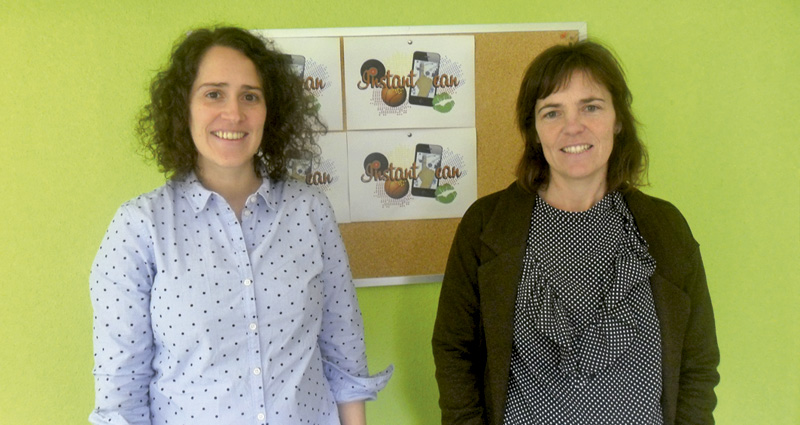
However, from the direct testimonies received from educators, Urrutia and Goya affirm that although they have internalized their theory of misuse, young people often think that their skin, or that of their relatives, will not live it. “It may happen that certain behaviors are devalued and that, due to the immediacy of technology, the problem is already entrenched. Sometimes, on social media, they give you the address of your home soon after you make a new friend. They have to learn to avoid them.”
Building digital identity
The use of social networks and concrete applications can be a sign of modernity or maturity, and this is important for young people who are building their identity, as explained by Itziar Larrañaga: “They want to feel part of a group, to be accepted, and social media allows to find people like everyone, for example, by listing hobbies through labels.” As he said, today’s young people see Facebook as a “question of the elderly.” And because their parents are there, they jump somewhere else, to Instagram or to Snapchat, to name the ones who use the most.
In the words of Lierni Goya, social networks not only serve to find people referent to specific issues, but also allow them to develop creativity and become protagonists, record videos or upload artistic photos to Instagram, among others. That is, from their hobbies, young people can develop skills that help them in the process of constructing digital identity. The professor of Urruña also referred to this: “Technology is useful for children to make their own productions (short videos, animations, sound recordings…) and pass as actors to the bottom of the screen. To meet the challenges of everyday life, the first step is for children to be creators.”
When parents complicate life
Why is there so much talk about the risks that social media has in youth and so little about how we use adults? Are we parents consistent with our discourse? What digital heritage are we leaving to our children?
Because it's common for us to upload our children's photos to social media from birth, unless we've hung the ultrasounds before. Every day we complete a graphic biography of our sons and daughters, while disseminating information about their private lives (housing, school, friends…) on many occasions, without being fully aware that the publication of photographs of minors can have negative consequences in terms of security and psychological. We believe that what is not published does not exist, and receiving the bag full “Like” sometimes blinds us, even more so when there are sons and daughters among them.
Itziar Larrañaga, member
of Guraso.eus: “When we implement parental control applications, it is important to explain to children why we do so, because threats or clandestine action often do not bear fruit”
A funny photo for parents or data that doesn't matter may seem different for the child, and in the future it may have an impact on their work, family, or social relationships. “Perhaps, growing up, the child doesn’t like people to know which school they were going to, or that the pictures of children dressed as clown are pasted when they are a teenager, because their peers can take advantage of themselves to mock,” says the psychologist at the UOC University of Catalonia Irene Montiel (La Vanguardia, 21-01-2017): “Showing photos of sons and daughters on social networks influences their psychological development, as part of the stage in which their identity is developing. When she's 8-9 years old, she goes online and realizes that someone has already created a digital identity. He may or may not agree with what he wants, and perhaps to build his own nature he will have to fight against what the person who has decided for him has created. And it is the parents who have made life difficult for them, who should defend their rights.”
“I am not against publishing images of children, but we have to be careful,” says Itziar Larrañaga of Guraso.eus: “Who are your supposed friends, 20 or 500? Before posting photos on social networks it is advisable to read the privacy rules and set limits. Same with WhatsApp. I can only send the photo to my friends, but to know if they will then spread it among their contacts.” Be careful, the experts say, because one of those 500 friends you have may not be that friendly.
“Some parents’ attitudes are inconsistent with their discourse,” said Larraitz Zeberio. “You have to walk carefully, because children learn more than what you do than what you have said.” Continuously look at WhatsApp when we are with them, take our phone out of our hands and leave us alone when it is convenient to go back, accompany us and upload all kinds of content on social networks, stick with the console and ask that they do not use the phone for the game… We also have things to learn adults.
Control vs Spying
Zeberio tells us that the television they have at home has direct access to the Internet. “It’s in the living room, where we can better control what the children see.” These words have allowed us to ask to what extent the use of technology by minors should be controlled, being aware that it is a thorny issue, since the border between care and espionage can be very diffuse. “Just as parents look at what their children keep in their closets, they look at which website they have entered or how many friends they have made on social media, especially if they suspect something extraordinary is happening, that children are being bullied at school,” Larrañaga tells us. Since we have mentioned harassment, we will open a parentheses to clarify two issues: On the one hand, from the conviction that children can be “victims”, to advise and talk about the subject is positive, but without forgetting that they can be “aggressors” or “accomplices”, and in this sense it is also convenient to carry out preventive work. On the other hand, with the inconveniences of technology (such as the extent that the humiliation suffered can have in a short time), it has a positive feature that must be highlighted, as pointed out by the member of Guraso.eus: “You have proof of what you have suffered thanks to the recorded videos; when it comes to filing a complaint, it can be useful.”
The interviewees consider that dialogue with young people is fundamental. “We often think it’s better not to show a kind of video because we’re pushing it, but I think it’s the opposite, to make them understand it’s wrong; they’ll even get to see that content without our help,” says Larrañaga. Likewise, when we implement parental control applications, it is important to explain to children why we do so, since threats or concealment often do not bear fruit.

On the other hand, the friends of the project Guraso.eus have explained to us that the agreement with the children is sufficiently extended and that they sign a type of contract that includes the rules on the use of technology and possible sanctions and prizes. “Instead of spying, it’s better to reach an agreement earlier, so that children are clear about what can happen to them if they don’t comply with what they’ve promised,” Larrañaga told us. “If we see that we take your opinion into account, everything is easier.”
We remember the “The First Convention” campaign that the Euskaltel company presented in the last Christmas, which was based on a kind of decalogue about the correct use of technology. “This is an agreement between parents and children to ensure the proper use of the first cell phone,” the company said: “In many houses the same concern arises: How old is it to get the first cell phone? According to the latest studies, 10% of children under 10 years of age are mobile. However, the most important thing is not the age at which they start, but the value with which they start.” Without going into deeper ratings, Zeberio told us that the age of the boys and girls who appear in the advertisement has surprised them a little, believing that they are too young – some boys and girls who appear in the video are 8 years old. “It shows that having a cell phone at that age is absolutely normal.”
At this rate it is going to be normal. As it should be normal for adults to constantly adapt to new devices and applications. We have made a report on social networks, instant messaging services, privacy, digital identity, etc., but the relationship between minors and technology has much more to do, which we cannot ignore as parents or educators: the dependence on video games, sports betting on the Internet, the consumption of pornography that produces very marked stereotypes…
HOW SHOULD COACHES PLAY WITH ATHLETES?
The Basque School of Sport, under the Direction of Youth and Sports of the Basque Government, is preparing a guide to “make proper use of social networks in the internal communication of groups of minors”, with special attention to platforms such as WhatsApp, which are one of the pillars of communication between the leaders and players of the club. These means have positive aspects, but also risks, unless certain criteria are laid down.
.jpg)
This guide will include recommendations aimed above all at coaches, as it is they who have direct contact with the players. “I train the 12-13 year old female basketball team in Bilbao,” explains Joseba Bujanda, a technician at the Basque Sports School. As usual, the WhatsApp group was created, an effective tool to transmit information and generate group dynamics, but as it is used, doubts are generated: “Is individual communication with girls adequate? Should I talk to your parents?” Although it has never had problems, it is aware, for example, that when we talk about sexual harassment, one of the hotbeds of risk is sports. “I started looking for information on the subject and realized that communication between coaches and players is very scarce. That's why we're addressing the challenge of launching the guide. We will explain how to avoid risks, without neglecting the positive aspects of technology: for example, dating is a very effective tool, also to promote sport and incorporate hobby, as it is the will of the trainer not to leave basketball to these young people when they are elderly. If so, I send them videos of spectacular baskets, or the most concrete moves, to encourage them to do the same.” The guide will be presented during May.
Zer jakin behar dut? Norekin erlazionatu behar dut? Non bizi behar dut? Ardura horiekin gabiltza gizakiok gure gizarteen baitan bizitza on baten ideia bizitzeko bidean. Ondo erantzuten ez badakigu, bazterretan geratuko garen beldurrez.
Joan den astean, kanpoan geratzearen... [+]
This weekend I've been thinking about the word 'aesthetic' in relation to a phrase said by a friend: “This work is aesthetic.” I have studied the etymology of the word aesthetic, it seems that its meaning was originally perceived through the senses, and it was later associated... [+]
Life surrounds everything, it is limited and fragile. To live good lives, it seems to me that the body knows what to do, while the mind, although it knows (when it is well informed), often sees the body deliberately silence. In this silence the mind opens itself to relations... [+]









